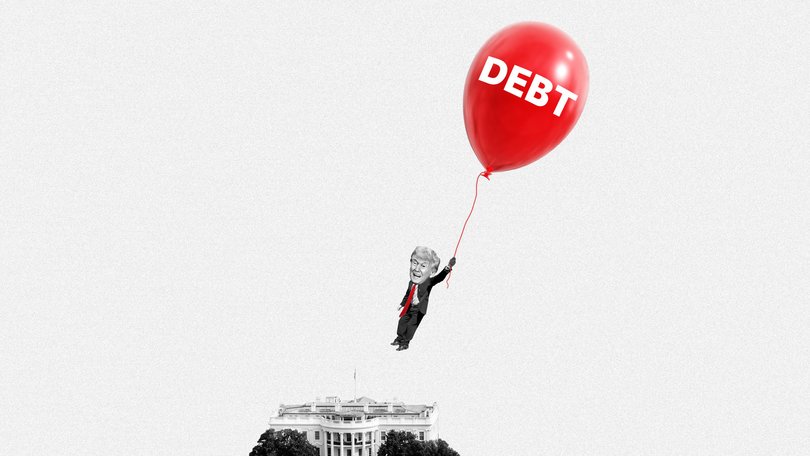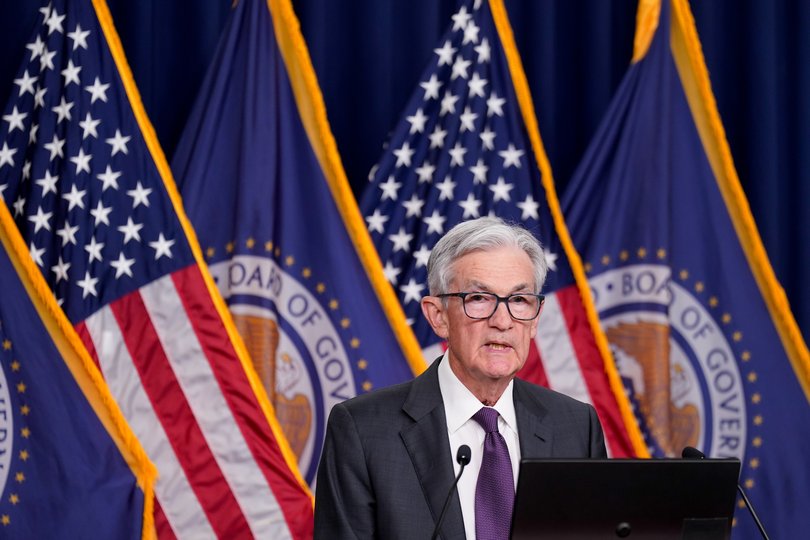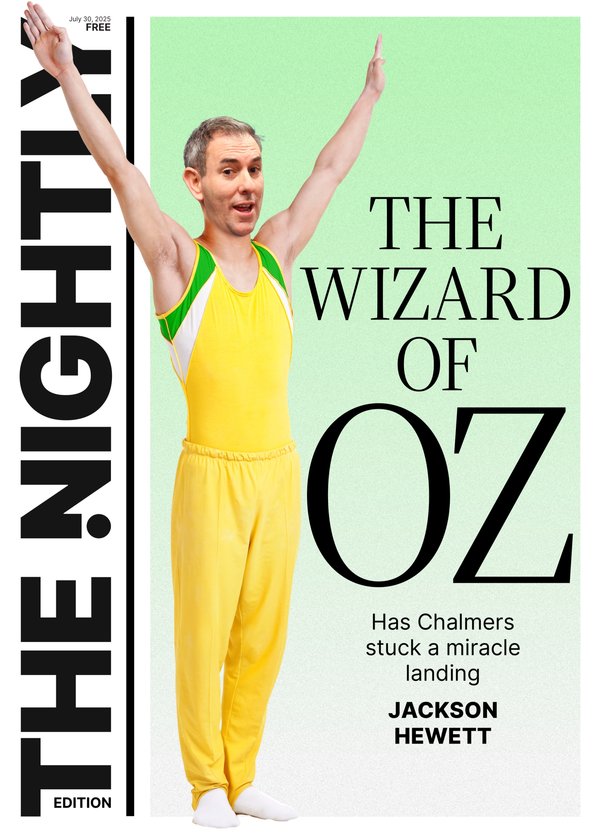JACKSON HEWETT: Why the sale of US Govt bonds is good news for global economy and Aussie mortgage-holders

A critical sale of US Government bonds went better than expected overnight, a sign that the destabilisation caused by Donald Trump’s tariffs and expensive tax cuts is not turning into a financial contagion.
The $US22-billion sale was the first big test for appetite for US debt and took place as US Congress debated Trump’s “Big Beautiful Bill”, which contains tax cuts projected to reduce US revenue by $4.5 trillion over the next 10 years.
Global investors have been nervously watching bond markets, worried not just about US debt but steepening deficits across the world.
Sign up to The Nightly's newsletters.
Get the first look at the digital newspaper, curated daily stories and breaking headlines delivered to your inbox.
By continuing you agree to our Terms and Privacy Policy.US Government debt, also known as Treasuries, has long set the global standard for interest rates due to the country’s status as the largest economy with stable revenue streams to pay interest.
But the US’s ability to pay for its excessive spending is starting to be questioned. Interest payments on US debt now exceed the country’s defence budget, and with this new tax bill, debt is expected to soar well above 100 per cent of GDP.
Concerns about the ballooning debt, particularly amid tariff chaos that might make repayments more difficult, had seen bond investors — who represent $US140t ($217t) in global savings — demand more return for their risk.
In recent months, the interest rate on 30-year US Government debt has spiked to over 5 per cent, the highest level in nearly 20 years.
That matters to Australia because US long-term bond yields directly affect the price we pay for longer-term debt, such as fixed-rate mortgages and corporate borrowing.
“The obvious fear is that higher bond yields in the US could mean higher bond yields here than would otherwise be the case, which then has to flow on to our fixed rate mortgages,” said Shane Oliver, chief economist at AMP.
“Longer term borrowing by corporates could be affected, because they will issue a bond that usually trades at some margin to Australian government bond yields, which, in turn are affected by the US bond yields.”
Reprieve in the short term
The fact that the US 30-year Treasury auction was oversubscribed helped push 30-year interest rates back down to 4.84 per cent, suggesting investors’ appetite for US debt has not disappeared.
Christian Baylis, chief investment officer at bond trading firm Fortlake Asset Management, said the market had not seen an issuance of longer-dated debt for some time and investors were eager to add more bonds to their portfolios.
“Everyone is desperate for long bonds as there has been a dearth of issuance due to tariff-related uncertainty. The book was well oversubscribed and yields are good relative to corporate bonds. Investors are now getting compensated for some sovereign risk,” Mr Baylis said.
Sovereign risk still a concern
While traders took up the issuance of new US debt, Mr Oliver said the picture for the US economy still hasn’t changed enough to suggest it is out of the fiscal woods.
The Big Beautiful Bill with its tax cuts still has to make its way through the Senate, meaning the impact of reduced revenue is still some time away.
Mr Oliver said markets may start to shift focus once the impact is reflected in monthly budget figures. Concerns could also escalate in August when Congress must again approve an increase in the Government’s debt ceiling — always a contentious process.
The long-held belief that US Treasuries are a safe haven for foreign investors, including Australian super funds, may also be starting to erode.
Global capital is increasingly shunning the US, demonstrated by the US dollar falling almost 10 per cent against a basket of foreign currencies since Mr Trump came to power.
China has already significantly wound down its holdings of US bonds after witnessing the US freeze Russia’s dollar-denominated assets. If the economic picture worsens and foreign investors continue to pull back, that would place further upward pressure on long-term interest rates.
Economic cat and mouse
The outlook for the US economy has become increasingly hard to read.
The expectation was that tariffs would have already started driving inflation higher. But the latest data suggests that it has not.
Inflation remained relatively benign for the fourth consecutive month at 2.8 per cent, according to official US statistics.
Goods prices excluding food and energy were flat, with declines in both new and used cars as well as apparel. Services prices excluding energy slowed on the previous month, driven by falling airfares and hotel rates.
Mr Oliver noted that while there had been worries about tariffs pushing prices higher, that hasn’t yet materialised. Some of the reason, he suggested, could be that US firms front-loaded inventory in early 2024, importing goods ahead of tariff deadlines.
“It’s quite possible companies stocked up in anticipation — the import data from January to March was strong,” he said. “They may now be running down that stockpile, which has delayed the inflationary impact.”
But that reprieve may be temporary. Business surveys, including the ISM and Philadelphia Fed reports, have shown a sharp rise in cost pressures, which could yet flow through to consumers.
Meanwhile, immigration raids on unauthorised workers could begin feeding through to labour and supply shortages, also pushing up prices. Trump appears to have twigged to this belatedly, noting the raids were affecting farmers and hospitality businesses.
The impact of the crackdown is clouding the broader economic picture. As The Nightly noted on Monday, US jobless figures may be distorted by the detention or deportation of workers.
Fears of ICE raids are also discouraging Latin American consumers from spending, with The Wall Street Journal reporting Coca-Cola’s sales volume in North America fell 3 per cent in the first quarter, partly due to a pullback by Hispanic shoppers.

Without a clear picture, US Federal Reserve chair Jerome Powell is in an invidious position.
While Mr Trump is trying to jawbone him into cutting rates — this week calling Powell a “numbskull” — the Fed remains, as Mr Oliver put it, stuck between a rock and a hard place.
“If it cuts now and then we suddenly get the tariff impact then they would risk a flow on to inflation expectations and then it makes it harder to get inflation back down again,” Mr Oliver said.
“They’re conscious of the 70s experience where inflation surged, they cut rates too much, and then inflation pressures picked up again, and then they hike again in this whipsawing effect.
“Trump has added to the risk of getting whipsawed on inflation.”
Add the potential of a Middle East conflict to all of that uncertainty around US deficits and the economy, and interest rate nervousness will be with us for awhile yet.

